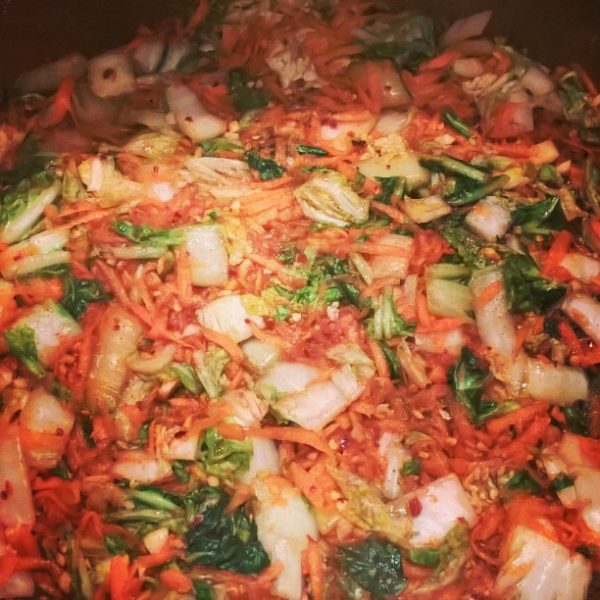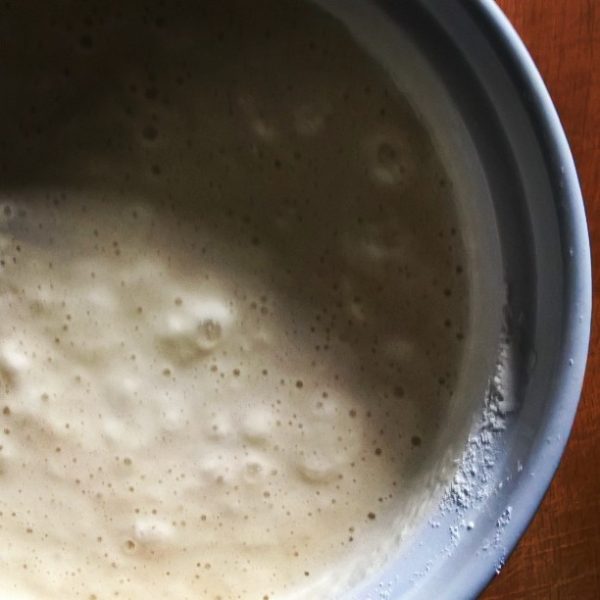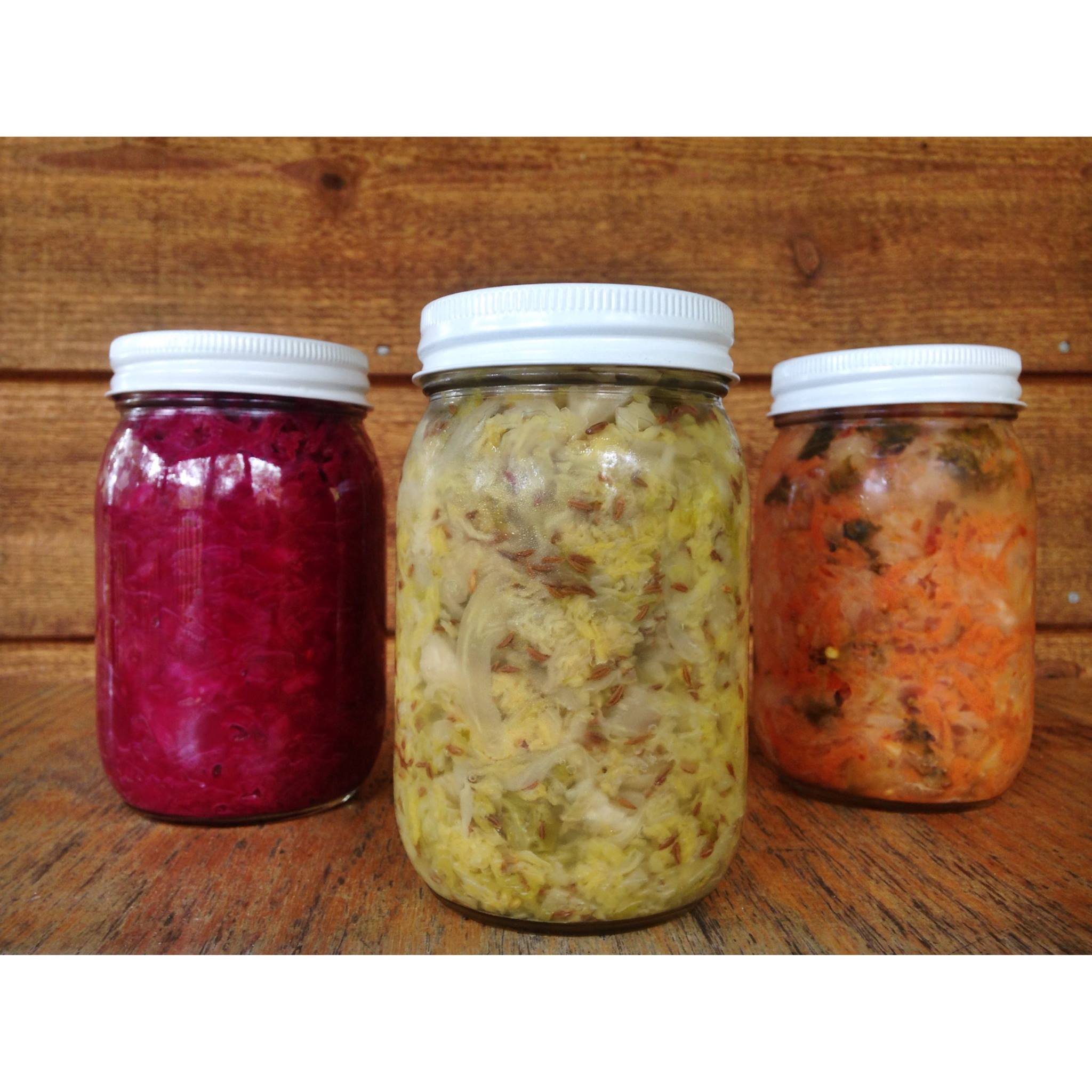Sandor Ellix Katz is a self-described “food-loving back-to-the-land generalist” whose fascination with fermentation and the subsequent health benefits of consuming said foods and beverages inspired “The Art of Fermentation,” released in 2012. We are kindred spirits. While I didn’t release an in-depth guide, in 2014, I courageously founded a small farm and ferment business in the Greenbrier Valley called Lobelia Understory Edibles that specialized in organic vegetables, cultivated mushrooms, naturally-fermented sauerkraut, and sourdough bread. In the same vein, trial and error (paired with a rapacious appetite) created memorable ferments that traveled as far as Blacksburg ,VA and solidified a bond with fellow fermenting enthusiasts in Pocahontas County.

Kimchi kraut ready for packing.
For those who aren’t familiar with the process of fermentation, it is the transformative action – or a chemical breakdown of a substance – by microorganisms, and is a process widely used in the making of beer, liquor and wine. Narrowing the focus on the method of lacto-fermentation, this occurs when the sugars and starches in vegetables are converted – or “fermented” – by the friendly bacteria known as lactobacillus. Lactobacillus bacteria is a natural growth inhibitor and keeps harmful bacteria and molds from growing and putrefying the vegetables while undergoing the fermentation process. The key to doing so is to create an anaerobic environment – or an environment devoid of oxygen – in which the lactobacillus bacteria can flourish, while maintaining a crunchy texture for kraut. In a vacuum container, molds and other oxygen-dependent bacteria will grow, but in an environment one is able to control. The most important thing – in terms of this style of fermentation – is pulling the water out of the vegetables. That way, when you pack it in your vessel later, the kraut will be completely submerged. In my experience, not all mold is harmful; aging food outside of the refrigerator produces immense fear in these modern times. While white mold may or may not grow under the vacuum seal, that does not mean you need to dispose of the entire batch of kraut; sights of blue and green mold make a person understandably wary, but it’s simply a matter of removing the surface layer. I promise you’ll find beautiful kraut underneath.

A bubbling brew: sourdough starter, flour, water, and eggs destined for pancakes.
Fermented foods and beverages often come in pairs – think meat and sauerkraut, milk kefir, kombucha tea, etc. I use a variety of vegetables – and the occasional fruit – but no matter the ingredients, the process remains the same. Ideally, my batches of kraut would rotate with the seasons (ramps in May, local apples in September) but fermentation knows no time. Began your batch by chopping and/or grating vegetables/fruit, and adding them temporarily to a container large enough to work with. A note on salt – not all are the same, and some are highly refined. Standard table salt contains iodine and various anti-caking agents, yet lactic acid remains unbiased. Canning, pickling, and kosher salts are all options. Based on personal preference and result, I’m in favor of J.Q. Dickinson Salt-Works in Malden, WV.
By massaging your ingredients, you pull the water out thus creating your own brine. I recommend leaving the vegetables out of the refrigerator and letting them warm up before chopping; vegetables right out of the refrigerator tend to be less forgiving. You might not end up with as much self-created brine for various reasons, but don’t become discouraged! Equal parts salt and water are enough to achieve a successful fermentation. Once the vegetables have been thoroughly massaged and have produced enough water (note: this could take up to an hour by hand) transfer the kraut from the mixing container to a fermenting vessel. Any ceramic or plastic crock, mason or pickle jar, will do. Amazon devotees can find BPA-free E-jen containers online, reasonably priced and lightweight with an inner vacuum seal that will keep kraut immersed in brine without using crock weights. My kraut ferments in a cool, dark place for roughly four weeks, then I jar individual batches and transfer them to my refrigerator (or if they’re lucky, the neighbors). The duration of fermentation can vary; it all depends on the person and the depth of flavor you want to achieve. Some prefer two weeks, others will go as long as six. Once you achieve the desired outcome, dish it out! I suggest eating an opened jar within a week or two, but unopened, sauerkraut has lasted as long as six months in my refrigerator with no effect on taste or texture.
In the first paragraph, I mention “naturally-fermented sauerkraut.” This distinction is imperative when discussing traditionally cooked or vinegar-based krauts with naysayers who swear they hate the stuff; typically found on a store shelf the onus is on you, dear reader, to change their minds. Happy fermenting!

